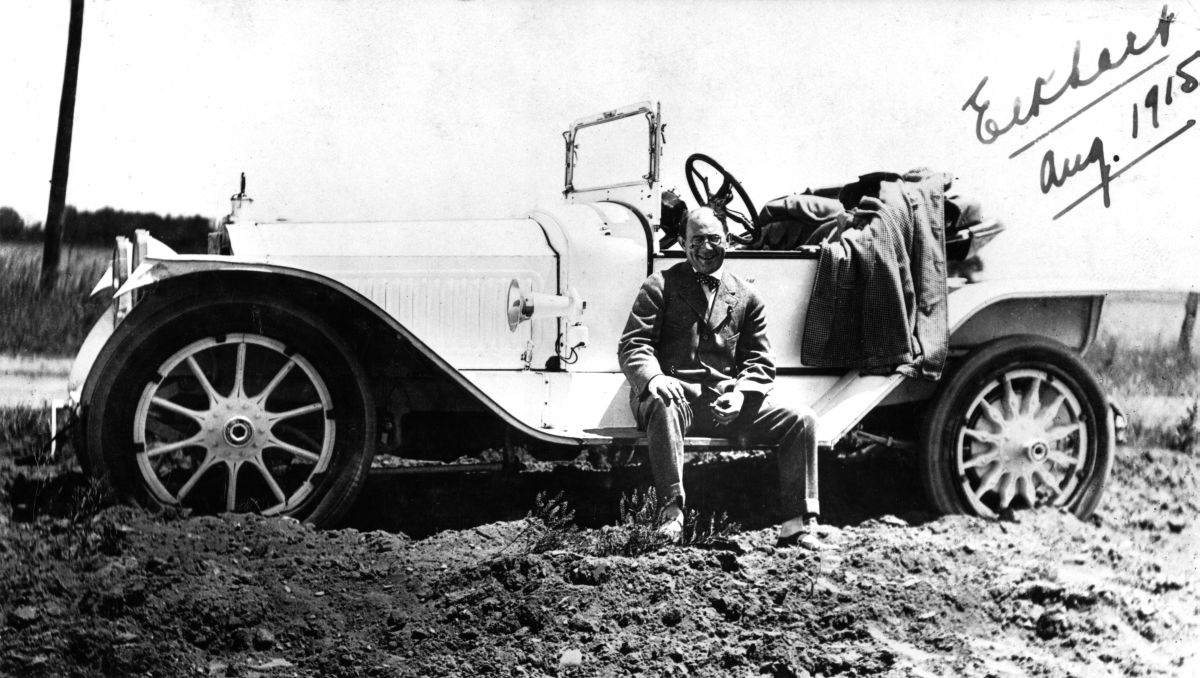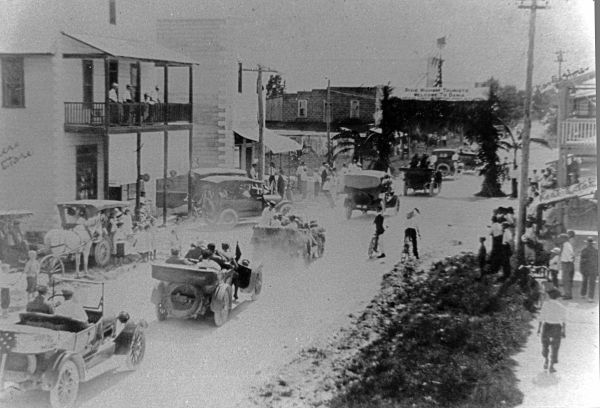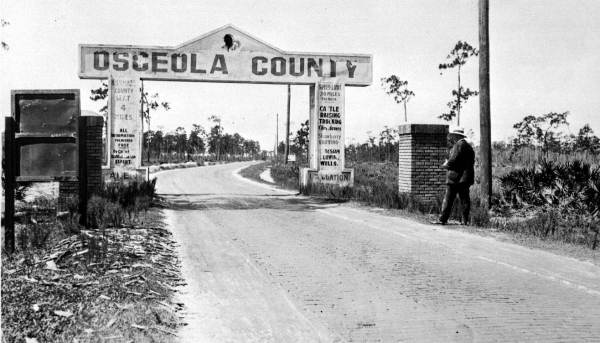Description of previous item
Description of next item
The Dixie Highway Comes to Florida
Published May 5, 2016 by Florida Memory
Florida is one of several states where, once in a while, you’re subject to come across a road called “Old Dixie Highway.” Some of the roads with this name are prominent thoroughfares, while others have become mere side streets over the years, bypassed by larger highways built along the outskirts of town. In the early twentieth century, all of these roadway segments were stitched together into what was briefly the largest interstate highway system in the United States.
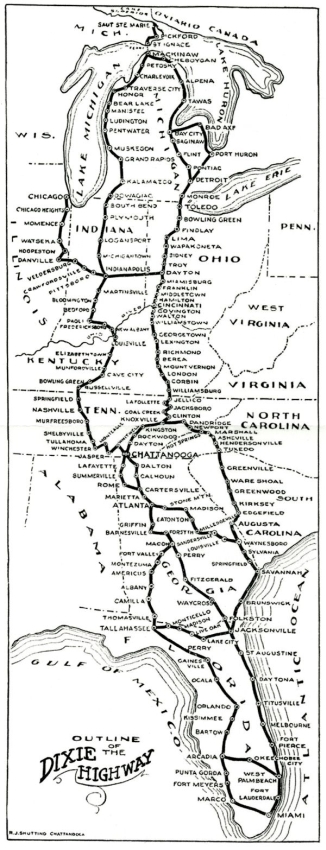
Outline of the Dixie Highway, drawn up by R.J. Shutting for the Dixie Highway Association (ca. 1919). Click the map to enlarge it.
The Dixie Highway was the brainchild of Carl Graham Fisher, the same entrepreneur who helped develop Miami Beach in the early 1910s. Fisher believed northerners would pay top dollar for lots in South Florida, but he recognized the need for a reliable highway to funnel his customers southward. He had already been involved in promoting the Lincoln Highway, an east-west route across the northern United States. That project had run into trouble, however. Promoters had expected private funding to cover the cost of building the road, but they were never able to raise the necessary ten million dollars. Fisher realized that for a highway connecting Miami with the northern states to succeed, it would require both private and public backing.
In November 1915, Carl Fisher announced his intention to build the nation’s first true national automobile highway linking the North and South. He originally called it the “Cotton Belt Route,” but the press quickly latched onto the road’s symbolic value as a peace gesture binding the nation together. Keep in mind there were still a number of individuals living at this time who had lived through the Civil War and Reconstruction. The New York Times suggested the new highway ought to be called the “Dixie Peaceway.” Over time, however, the name settled into the familiar “Dixie Highway” we still see on road signs today.
Fisher originally intended for the highway to run between Chicago and Miami, but the route in between was up for debate. Virtually every community between these two endpoints wanted to be located along the profitable new road. Fisher and his backers decided to organize a conference of governors and other state representatives in Chattanooga in April 1915 to hammer out the details and form the Dixie Highway Association. Constructing and maintaining the roadway would remain the responsibility of the states and communities along the route, but the Association would help with marketing, surveying, and other coordinating tasks.
The Dixie Highway Association called on each governor whose state would be traversed by the new road to appoint two commissioners to decide on the best route and report back with their views. Governor Park Trammell appointed George W. Saxon, a banker from Tallahassee, and Samuel A. Belcher, a road construction magnate from Miami, as Florida’s commissioners. Carl Fisher and most of the road’s advocates had long assumed the Dixie Highway would enter the state north of Jacksonville and simply follow the Atlantic coast to Miami. Highway enthusiasts in the middle of the state and along the Gulf Coast, however, wanted to reap some of the highway’s benefits for themselves. The Central Florida Highway Association, a powerful lobbying organization with members from Naples to Tallahassee, argued for a western branch of the Dixie Highway that would offer travelers an alternate route between Macon, Georgia and Miami via a string of towns on the western side of the Florida peninsula.
Belcher and Saxon agreed a western route was needed, but they couldn’t agree on where it should be located. Saxon and the Central Florida Highway Association wanted to include towns near the Gulf coast north of Gainesville, including Trenton, Perry, and Tallahassee. South of Kissimmee, they wanted the Dixie Highway to proceed as far southwest as Arcadia before turning back east to rejoin the main route near Jupiter. Belcher thought this route was too long and winding to properly serve northern travelers. He envisioned a highway proceeding almost due north from Gainesville, passing through Live Oak or Lake City before entering Georgia near Valdosta. South of Kissimmee, he thought the road should head straight for the coast, hitting somewhere around Melbourne as U.S. 192 does today.
While Belcher’s route was more direct, Saxon argued that the Gulf coast communities had already pledged considerable support for the highway, with taxpayers even voting to bond themselves for the necessary funding. If their communities were bypassed, he warned, those communities might withdraw their support for the project altogether. Belcher ultimately relented, and the Dixie Highway was established with two routes through Florida, connected by cross-state roads at several points.
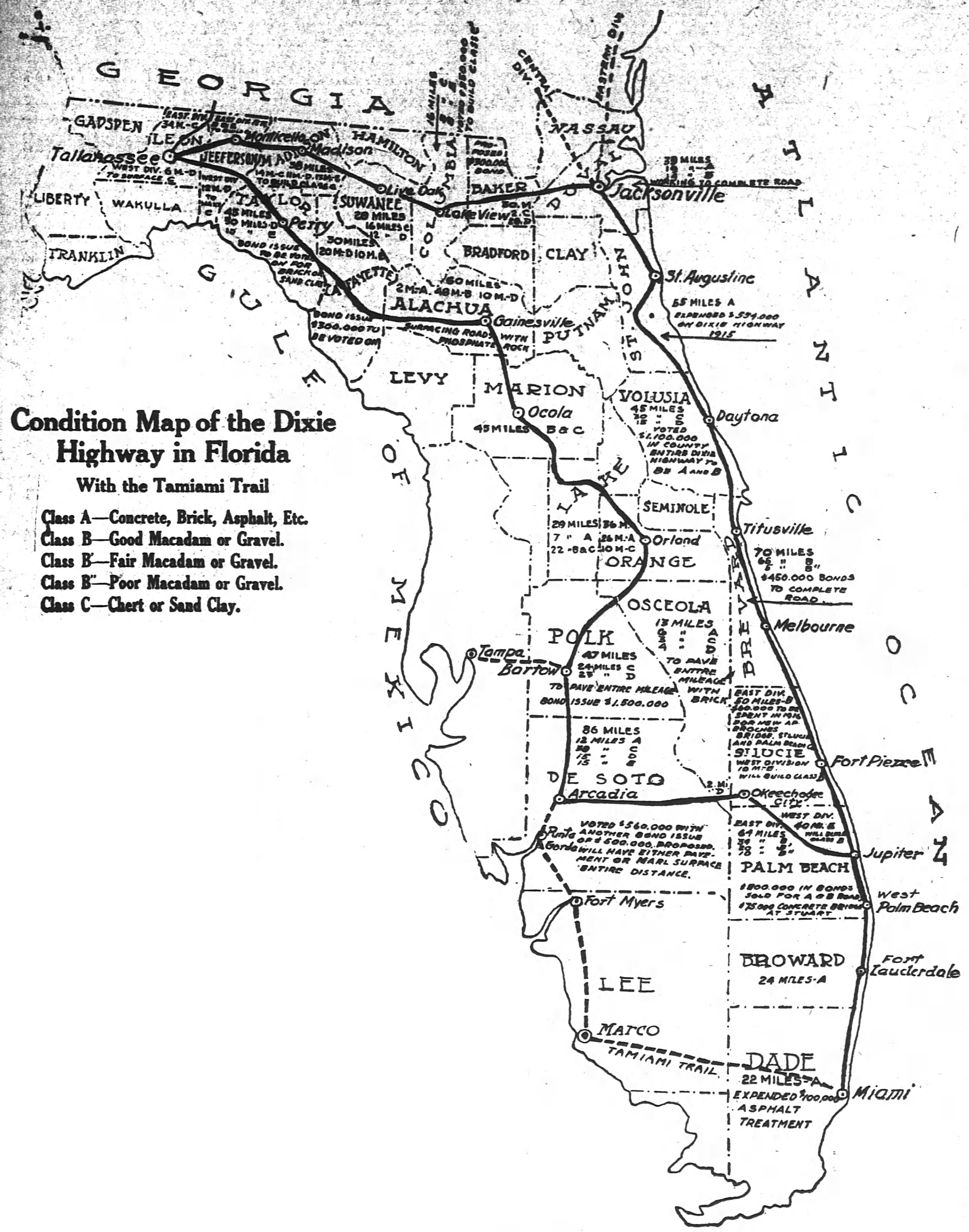
Map of the proposed Dixie Highway in Florida, showing both the originally contemplated eastern and western routes, along with the bonds pledged by each county and the amount of work completed. Originally printed in the Atlanta Constitution, June 4, 1916. Click the image to enlarge it.
The Dixie Highway was as successful as its founders had hoped, but it survived only a short time under its original name. All of the commotion over funding the road and selecting its route had provoked questions about the federal government’s potential role in developing interstate highways. A coalition of local authorities, business owners, and auto industry leaders began calling for Washington to simplify the process of expanding the nation’s highway infrastructure by funding and supervising a network of federal roads.
In 1916, President Woodrow Wilson signed the Bankhead Act, which pumped $75 million of federal money into the idea. This was the beginning of the U.S. highway system we know today. As that system grew, older blazed trails like the Dixie and Lincoln highways were absorbed into it. Soon, the name “Dixie Highway” was only used locally on certain segments of the original route, usually with “Old” in front of it. The name “Dixie Highway” also lived on in the names of businesses like the “Dixie Highway Garage” or the “Dixie Highway Inn” that had sought to link themselves to the novelty of the new road.
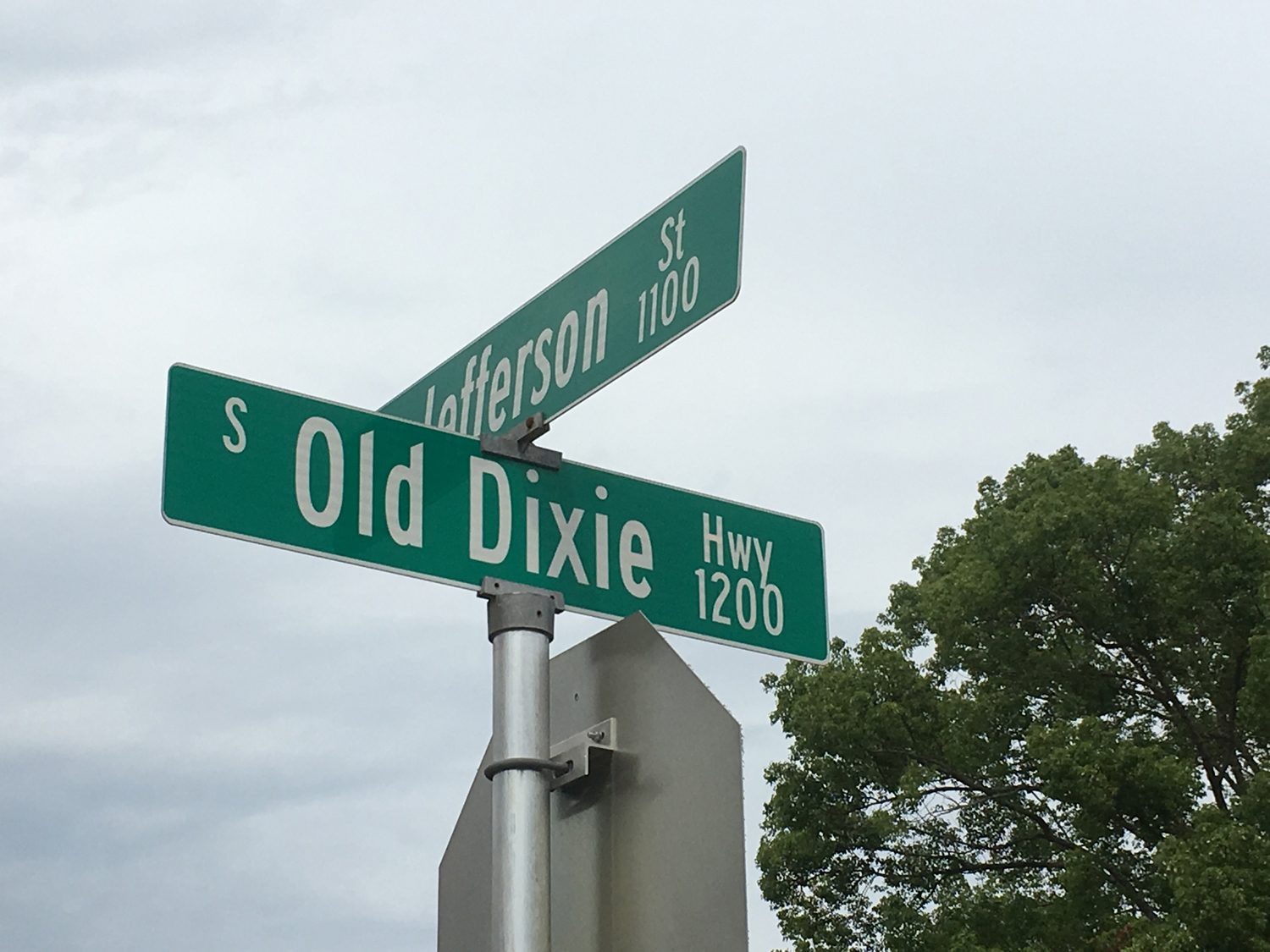
A segment of the Dixie Highway in Perry (Taylor County) still carries its original name, as this sign at the corner of Old Dixie Highway and Jefferson Street indicates (2016). Photo courtesy of Susan Moody.
Next time you’re driving through Florida and encounter a portion of the “Old Dixie Highway,” we encourage you to drive it and try to capture a bit of the excitement that must have filled northern travelers coming to the Sunshine State for the first time. You’ll not only be getting off the beaten path for a while – you’ll also be driving down a unique piece of Florida history!
Cite This Article
Chicago Manual of Style
(17th Edition)Florida Memory. "The Dixie Highway Comes to Florida." Floridiana, 2016. https://www.floridamemory.com/items/show/321979.
MLA
(9th Edition)Florida Memory. "The Dixie Highway Comes to Florida." Floridiana, 2016, https://www.floridamemory.com/items/show/321979. Accessed December 26, 2025.
APA
(7th Edition)Florida Memory. (2016, May 5). The Dixie Highway Comes to Florida. Floridiana. Retrieved from https://www.floridamemory.com/items/show/321979

 Listen: The Latin Program
Listen: The Latin Program